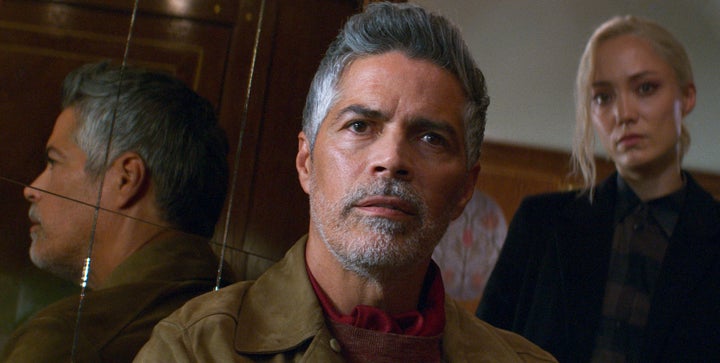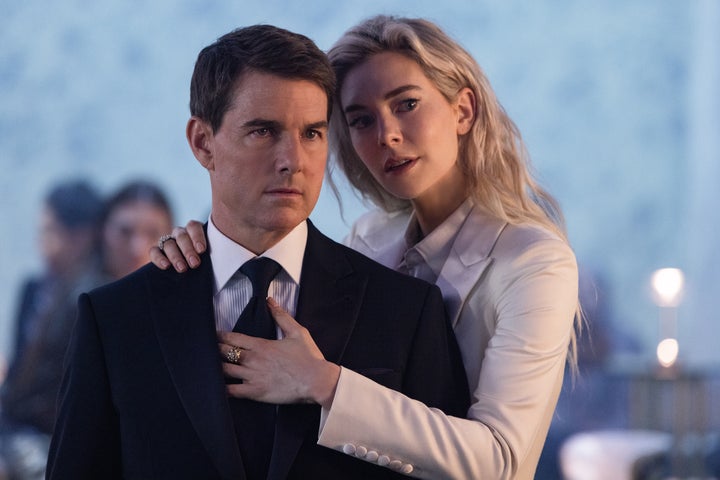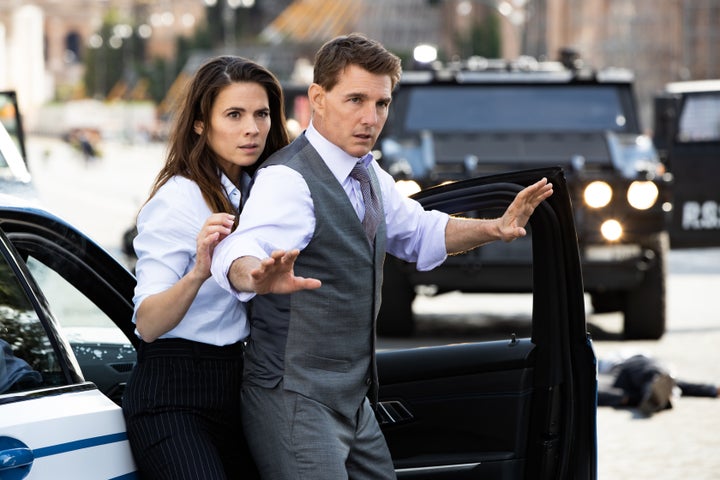
You can call Dead Reckoning Part One propaganda. Some critics have already alluded to that. But rarely has a Mission: Impossible film been subtle. Slick as hell, sure, but hardly subtle. This is, after all, a franchise that has promoted its newest film with boasts about “the biggest stunt in cinema history.”
Mission: Impossible has never been an empty spy action brand, though. Inspired by the ’60s TV series of the same name, it’s always employed technology as both a weapon and a source of entertainment — hence the mask reveal effects and the secret agents’ cutting-edge firearms, for instance.
That’s part of what’s made the films so fascinating and enjoyable to watch: their self-awareness. All of this remains true in Mission: Impossible — Dead Reckoning Part One, which reunites Ethan Hunt (Tom Cruise) with his friends and fellow Impossible Mission Force agents Luther (Ving Rhames) and Benji (Simon Pegg) on an increasingly twisty new mission.
The action, helmed for the third time in a row by director Christopher McQuarrie, begins as chaotically as any other entry in the franchise. It lifts off from a United Arab Emirates airport where the team is hotly pursuing Grace (Hayley Atwell), a pickpocket who could be useful to them. At the same time, they receive word of a bomb they must urgently detonate.

Oh, and Ethan encounters Gabriel (Esai Morales), a nefarious man from his past who visibly unsettles Ethan and proves to be his match in every way.
But Ethan is decidedly good, and Gabriel most definitely is not. “Dead Reckoning Part One” keeps their relationship frustratingly vague, sprinkling flashbacks throughout the nearly three-hour film like breadcrumbs — presumably as a setup for the next one.
Though that decision bypasses an intriguing opportunity to explore the nuances of good and bad, hero and villain, it becomes increasingly clear that neither of these characters, or their obvious beef, is at the core of this instalment.
Rather, it’s what they’re both after, for very different reasons: an ineffable tech known only as The Entity. After much cryptic conversation among everyone from the IMF agents and law enforcement hot on their tails to Gabriel and the double-teaming White Widow (Vanessa Kirby) and Paris (Pom Klementieff), the story comes barreling toward one conclusion.
The Entity will be the thing to destroy them all.

But depending on who ultimately gets ahold of it, that outcome could be prevented (and the world would probably disintegrate on its own natural course), or The Entity could be unleashed onto the world with devastating impact.
Neither is a particularly great option, to be fair. And it’s not good that this fate lies in either Ethan or Gabriel’s fallible hands. Still, the mere existence of The Entity, which is very heavily coded as artificial intelligence, will evidently mark the end of humanity or at least human decency. At any rate, it helps pit each of these human forces against each other.
It’s dramatic — perhaps even a little melodramatic. But beyond being undeniably great suspense, this revelation makes Dead Reckoning Part One among the first major studio blockbusters to directly engage with the threat of AI this year amid our real-life reckoning with it.
Numerous articles have emerged since organisations like BuzzFeed (which owns HuffPost), the music industry, Hollywood and others have begun co-opting human performance for AI technology like ChatGPT.

Many have rightfully asked pressing questions such as, how might this impact people’s livelihoods? How could AI possibly take the place of nuance or human emotion? From a legal standpoint, could it potentially exploit people’s work — or spark new copyright concerns? These issues are especially prominent now as the Writers Guild of America strike continues.
And, equally as imperative, how can you stop AI from morphing into something more heinous that would only intensify our already flawed humanity?
That last question is where the primary conflict in Dead Reckoning Part One sits. Amid its terrific action sequences, comedic wit and — somewhere deep within that — heart, the movie is helping to sound a much-needed alarm.
It might be a bit heavy-handed, particularly as the story progresses. But it’s part of a franchise that has maintained a close kinship with evolving and future tech, and we’re in the middle of a complicated and impassioned tech dialogue. It’s smart to acknowledge that with some sense of exigency. In fact, it’s integral that it does. And this doesn’t diminish the movie’s integrity.

If anything, doing so only makes Dead Reckoning Part One an even better movie. The jaw-dropping action — including a much-discussed sequence in which Ethan parachutes from atop a mountain to the inside of a runaway train — is still an indelible part of its magic.
That joins the droll banter among the teams of characters, thanks in part to co-writer Erik Jendresen and the actors (including a razor-sharp Rebecca Ferguson returning as agent Ilsa Faust), who seem to be having a blast.
Dead Reckoning Part One is, unequivocally, a deliriously fun time at the movie theatre. But the film is also smart in the way that it provokes scrutiny of our modern-day tech and how that impacts our humanity.
It raises some questions that seem less like plot holes and more like things with which the characters, and perhaps the filmmakers, are wrangling. The use of AI is just one of them. The others relate to its ending, which resolves one of the story’s conflicts but leaves another to be dealt with for the next film.
That can’t come soon enough.
